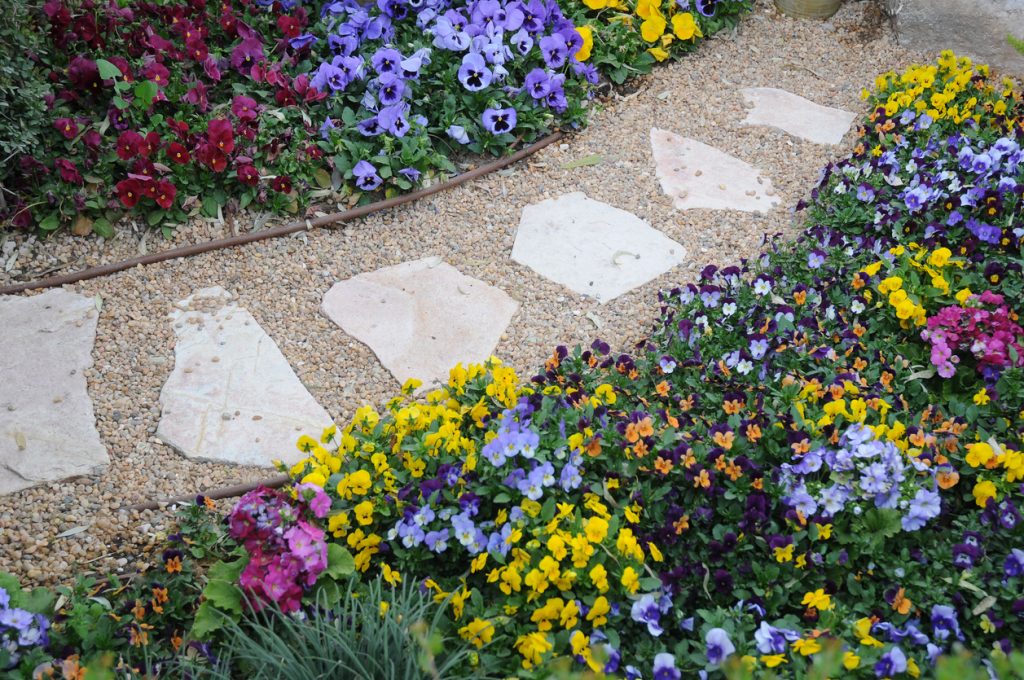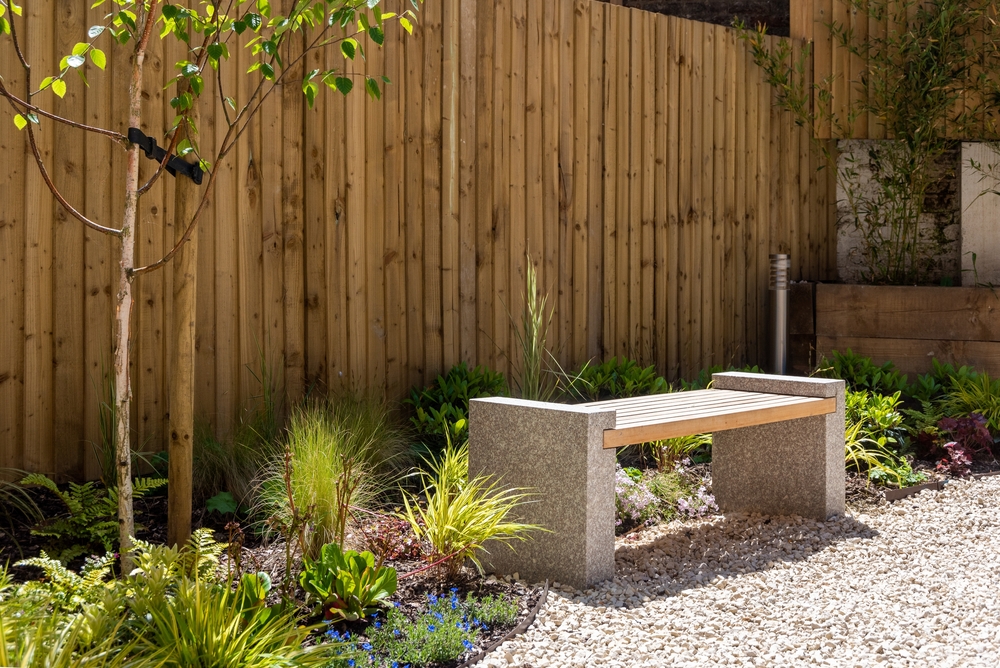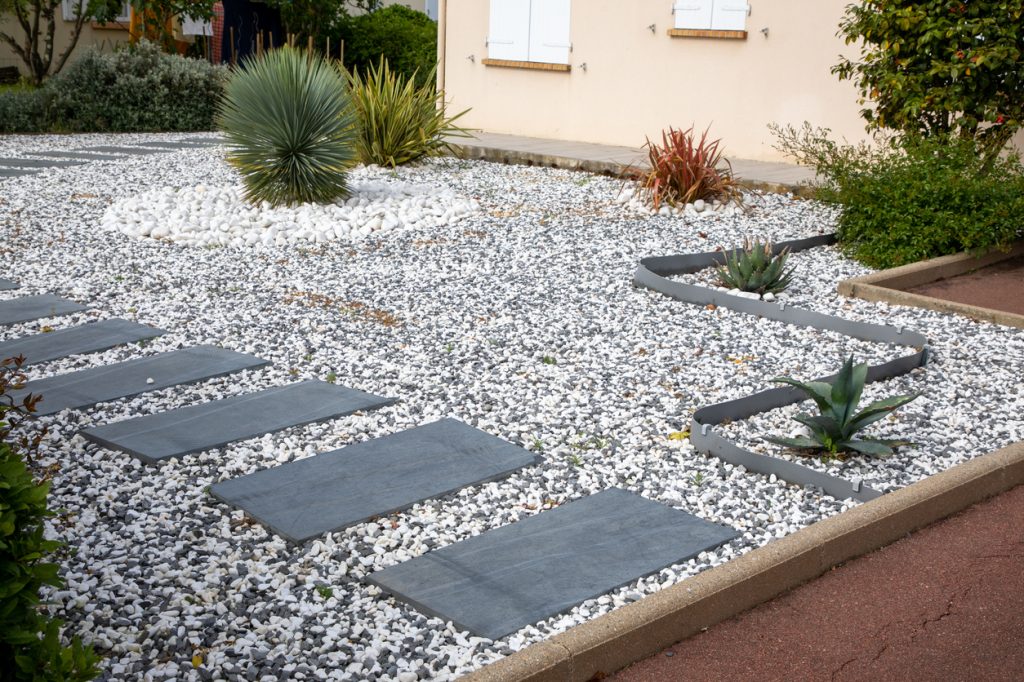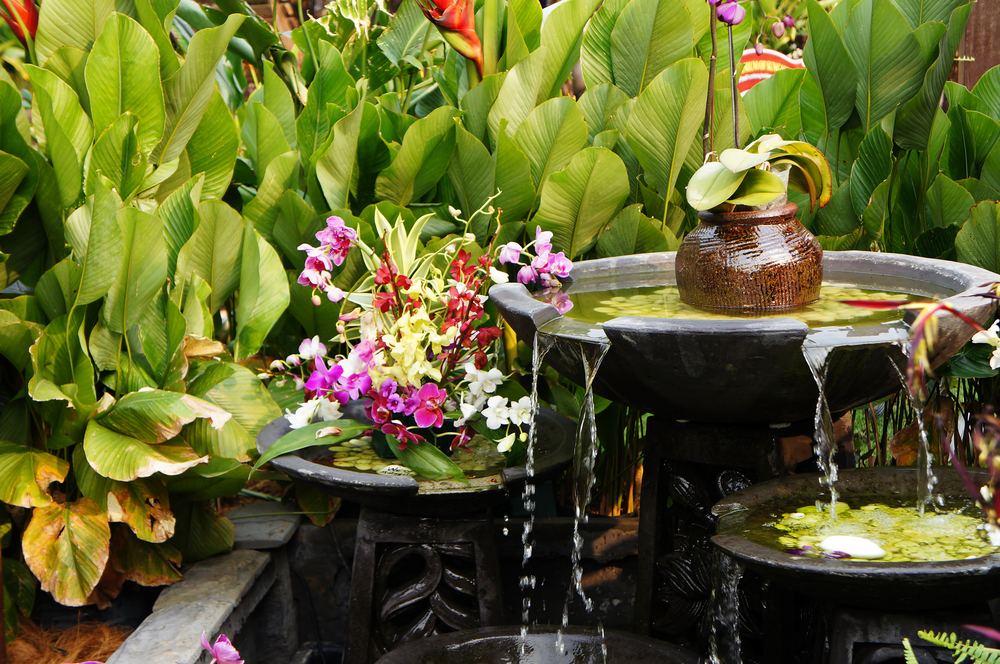Zen Garden Ideas for the Ultimate Relaxation

As a part of your home, your backyard should feel just as inviting as the space within your four walls. And if you’re looking to go beyond sprucing it up for entertaining or making it cozier with a fire pit, you could turn it into an oasis of calm as a zen garden. Zen gardens are also known as dry gardens or rock gardens and are inspired by Japanese design. They typically feature rocks, gravel, moss, sand, water features and other design elements and are great for relaxing and looking inward.
While it might sound challenging to get right, there are a few simple pointers you can keep in mind during the process that will help you achieve the peace and calm you’re after in that space. Read on for zen garden ideas for the ultimate relaxation, according to experts.
RELATED: 10 Easy Ways to Instantly Transform Your Porch.
1
Give yourself places to walk.

Every yard needs some comfortable seating, but when you’re planning your zen garden, you may want to prioritize a way to get in some slow steps.
“I recommend creating a winding garden pathway with decomposed granite (DG) or pea gravel, which encourages slow, mindful walking,” says Marek Bowers, founder of Bolder Green. “In addition to the pathway, my garden also features a 20-foot long tunnel trellis with climbing plants.” He adds that bougainvillea and star jasmine are great choices for this kind of growth.
Bowers further explains that pathways help guide movement through the garden, allowing for reflection and a deeper connection with your surroundings.
2
Consider how much privacy you’ll have.

Whether you have an expansive backyard or just a tiny patch of grass, you may be hesitant to add boundaries around your lawn. However, you should consider some kind of separation element if you’re looking for a place to relax.
“Seclusion is key,” says Rafi Friedman, president of Coastal Luxury Outdoors. “Zen gardens are a lot more zen when you can enjoy quiet and privacy.”
He says fences, pergolas, and especially hedges are a great way to separate your zen garden from the rest of your yard. This can also make it easier to flow with your home’s aesthetic and allows you some flexibility with what elements you use—especially if you’re on a budget.
“Boxwood is my top choice for hedges in general, especially for zen gardens,” Friedman suggests. “They’re evergreen, and they grow tall and thick.”
RELATED: 5 Plants That Will Keep Mosquitoes Out of Your Yard, According to Pest Experts.
3
Try adding a rock garden.

Not all zen gardens require an infinite amount of space. In fact, you can still create the same sanctuary vibe by incorporating the right elements in your yard.
“Another idea to consider is creating a clean-lined, modern rock garden filled with an array of succulents, complemented by a stepping-stone pathway,” Bowers suggests.
This approach is especially suitable for people living in hot climates, where maintaining lush greenery all summer long is expensive and difficult. It’s also a way to repurpose some of the rocks you find while landscaping, making it relatively budget-friendly as well.
4
Don’t forget to bring in some water.

While plants and sculptures add to the visual components of a garden, there are very few options that can incorporate a soothing sound into your sanctuary. But for a zen garden, the calming effect of a steady trickle of water may be just the thing you need.
“Water features are very zen,” says Friedman. “Fountains, artificial streams, and fish ponds are great ways to bring serenity to your zen garden, especially if they contain natural elements.”
However, don’t forget that these elevated elements require a bit of maintenance. “Water circulation and filtration are essential here to avoid algae buildup and to keep your water features from becoming a mosquito breeding ground,” he warns.
RELATED: How to Compost: A Step-by-Step Guide.
5
Work in some bonsai trees.

Bowers says incorporating bonsai trees into any outdoor sitting area can easily transform it into a serene retreat, even if you’re not working with much square footage.
“This is also great for apartment dwellers who have a porch!” he says.
To get started, choose bonsai varieties like olive, juniper, maple, or pine that thrive in your climate, and display them on stands or shelves at varying heights to add depth. Then, complement your bonsai with small plants such as moss or ferns, and integrate natural materials like bamboo screens, stone lanterns, or a small water feature.
“Opt for neutral-toned minimalist furniture with clean lines and natural materials like wood or rattan, and use soft lighting from paper lanterns, fairy lights, or LED candles to create a soothing ambiance,” Bowers suggests.
6
Think twice about a sand feature.

Many people picture wide swaths of meticulously raked sand when they think of a zen garden. But before you go incorporating this traditional element, it’s essential to remember that this isn’t exactly a “set it and forget it” feature.
“Sand is high maintenance,” Friedman cautions. “While sand gardens are a classic element of zen garden design, they take a lot of work to keep clean. You’ll need to regularly rake and sift your sand to pull out leaves and other debris, and you’ll want to be sure that your sand garden has excellent drainage.”